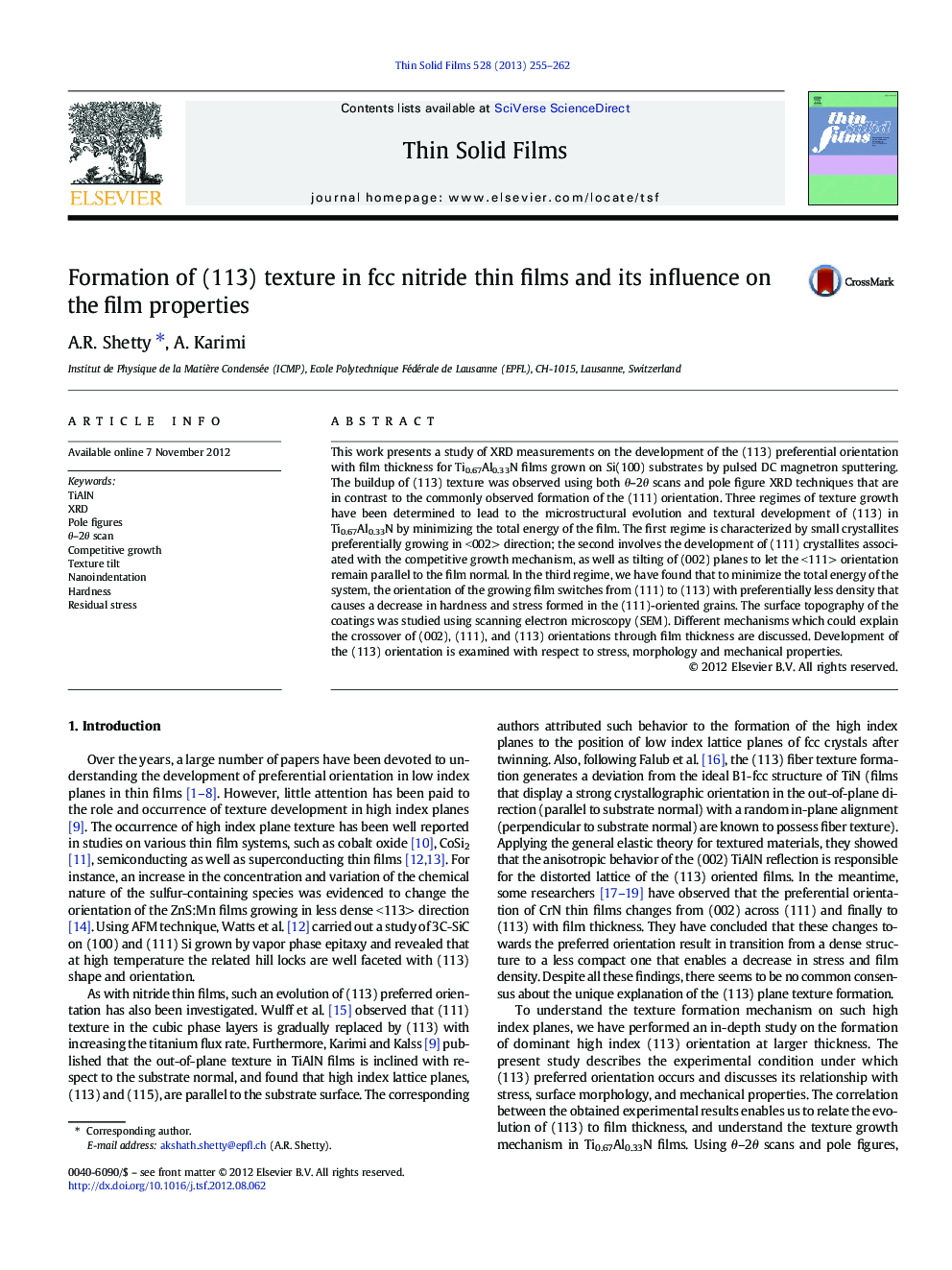| کد مقاله | کد نشریه | سال انتشار | مقاله انگلیسی | نسخه تمام متن |
|---|---|---|---|---|
| 1666906 | 1518076 | 2013 | 8 صفحه PDF | دانلود رایگان |

This work presents a study of XRD measurements on the development of the (113) preferential orientation with film thickness for Ti0.67Al0.33N films grown on Si(100) substrates by pulsed DC magnetron sputtering. The buildup of (113) texture was observed using both θ–2θ scans and pole figure XRD techniques that are in contrast to the commonly observed formation of the (111) orientation. Three regimes of texture growth have been determined to lead to the microstructural evolution and textural development of (113) in Ti0.67Al0.33N by minimizing the total energy of the film. The first regime is characterized by small crystallites preferentially growing in <002> direction; the second involves the development of (111) crystallites associated with the competitive growth mechanism, as well as tilting of (002) planes to let the <111> orientation remain parallel to the film normal. In the third regime, we have found that to minimize the total energy of the system, the orientation of the growing film switches from (111) to (113) with preferentially less density that causes a decrease in hardness and stress formed in the (111)-oriented grains. The surface topography of the coatings was studied using scanning electron microscopy (SEM). Different mechanisms which could explain the crossover of (002), (111), and (113) orientations through film thickness are discussed. Development of the (113) orientation is examined with respect to stress, morphology and mechanical properties.
► (113)-oriented TiAlN films were grown on Si with film thickness.
► This is in contrast to expected (111) orientation as reported by others.
► Three regimes lead to texture development of (113).
► Formation of (113) leads to a decrease in hardness, stress and change in topography.
► To reduce the total energy, orientation of growing film changes to less dense (113).
Journal: Thin Solid Films - Volume 528, 15 January 2013, Pages 255–262